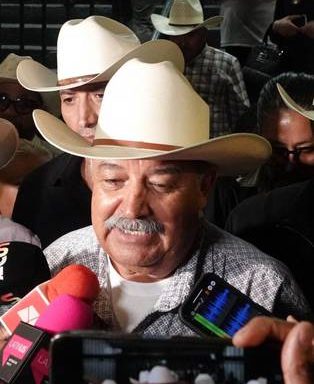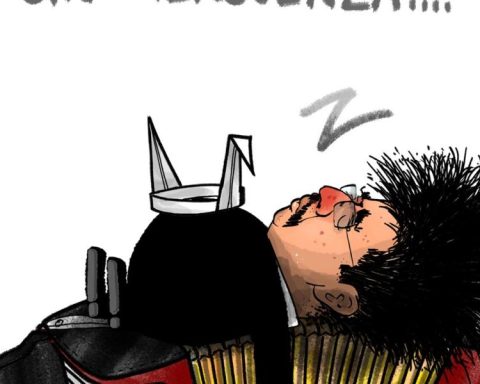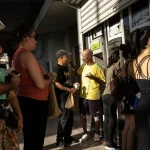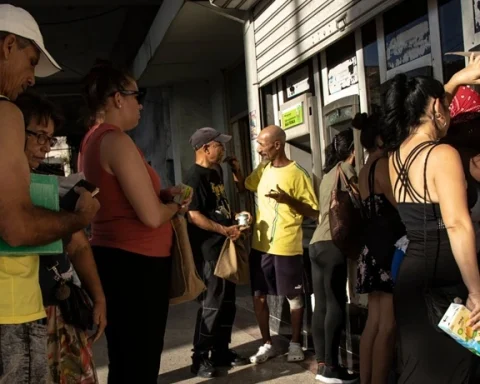Trade and transportation in Mexico
“I bring a four-ton truck and I can’t fill it. I put 600 pesos on it, which is about 28 liters. Previously, with 600 pesos he filled more than three quarters of a tank. Now not even half a tank is filled,” says Francisco Rivera, a fruit and vegetable merchant in the town of Santa Fe, in CDMX.
Every day, Rivera makes a 42-kilometer tour that includes the Santa Fe Market and the Central de Abastos.
“What the government is doing is ridiculous. They are offering gas, but they are ‘grinding’ us with gasoline. They gave us atole with the finger with gasoline because it came to 19 pesos. I brought my full tank, and overnight it started to rise and hurt us financially because, instead of saving, we are losing with gasoline,” lamented the merchant.
Before, a tank was filled with 3,000 pesos. “Right now, for you to fill a tank, it costs more than 5,000 or 6,000 pesos. We bring a 200-liter tank of diesel,” says Adolfo Ortega Ruiz, who drives a passenger truck on Route 5 in the west of the country’s capital.
Ortega Ruiz has the advantage of owning the truck, so he tries to take better care of his unit: “I don’t run around (to get a ticket) and there are certain things you can do to take care of the fuel,” he said.
In addition to the increase in diesel, it also has to face the increase in the cost of spare parts. For example, two years ago (Chinese) tires cost around 3,000 pesos. “Right now they are between 5,500 and 6,000 pesos” and they have a life of about two years.
The bad news for them is that “the authority (CDMX Mobility Secretariat) has already told us that they are not going to give us any increase. Right now, for us to go out more or less, it was for us to charge 10 pesos per ticket, and we are at 6”, he said.
Gasolinazo in NY
Rochelle Sundet filled the tank of her Toyota Corolla last Thursday at a gas station in Long Island City, New York. At the beginning of the year, Sundet, a 43-year-old American citizen, was paying $50 to fully fill her car’s tank with gasoline. She now received her receipt for $67, but she couldn’t fill it all up.
Sundet has been working as an Uber driver for a year and a half, when she lost her job as a bank executive at the start of the pandemic. Now the price escalation worries her, but she says there is not much to do. If before 30% of her profits were going to be paid for fuel, her new calculations make her foresee that she will rise to 40%.
As gasoline prices increase, so does customer demand. With prices going up, he said, many commuters from the suburbs to Manhattan have opted to leave the car at home, and some of them opt for this type of transportation. “And I don’t think prices are going to go down any time soon, it’s only going to get worse … This is what it is, there’s nothing we can do.”
The price of gasoline has broken records in the United States. On Wednesday, regular gasoline was sold at $4,245 per gallon (3.7854 liters) and the climb continues. The highest prices in the country are recorded in California.
Abraham Zinman decided to leave his BMW at home because, he says, it spends too much. Since last weekend he has been using the other car he owns: a Nissan that uses much less gas and that he can fill with regular fuel and not with ‘supreme’ gasoline.
This Thursday Zinman wears a sports outfit and jokes that this was the fault of fuel prices. The company he works for has given him the option of working from home or from the office, this Thursday he did not want to spend more and opted for the first option. “At least it saved me from traffic,” he jokes as he concentrates on not going over the $40 he wants to spend on gas.
Matt Deaton, a man in his late 60s, opted to put a philosophical spin on the price escalation. He assures that after the pandemic and the conflict in Ukraine, paying more for a gallon of gasoline is the least of his concerns. “We are survivors of the coronavirus, I lost my wife, do you think the increase in prices worries me?” He tells an Exxon brand station. “Now the only thing we have to do is worry about generating more income or making fewer purchases, there is not much else to do.”
(Andrew Kelly/REUTERS)
















